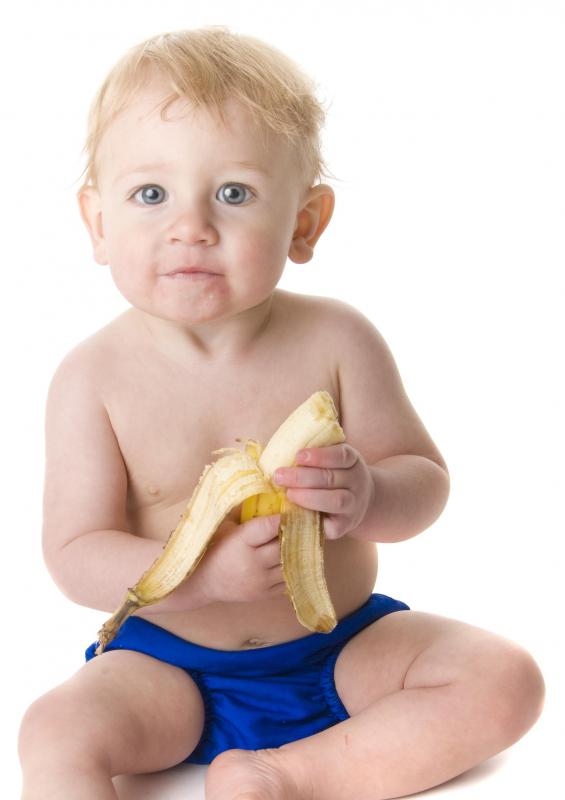At WiseGEEK, we're committed to delivering accurate, trustworthy information. Our expert-authored content is rigorously fact-checked and sourced from credible authorities. Discover how we uphold the highest standards in providing you with reliable knowledge.
What is Baby-Led Weaning?
Baby-led weaning, or BLW, is a means of presenting adult food to a baby who is ready to begin weaning. At the age of six months, most healthy babies can sit up, bring food to their mouths with their hands, and chew and swallow the food. Baby-led weaning dispenses with spoon feeding, to give babies more control over what and how much they eat. Baby-led weaning is often promoted as a way to introduce young babies to solid foods, and to help babies develop an interest in trying new foods and participating in family mealtimes. BLW is a safe way to wean babies off of breastfeeding or formula and help them become accustomed to eating solid foods.
Proponents of baby-led weaning believe that this method of weaning has a number of advantages over spoon-feeding pureed foods during weaning. BLW allows babies to self-regulate their solid food consumption, eating only as much as they like. Because babies are allowed to control the amount of food that goes into their mouths, they are less likely than spoon-fed babies to choke on solid foods.

Experts recommend that babies six months and older be allowed to sit with the family during mealtimes and be offered foods that they can eat with their hands. Foods of different textures can be given to help babies get used to the idea of eating a variety of different foods. Parents who practice baby-led weaning often believe that their babies enjoy a more varied diet, join more easily into family meals, and are less picky about what foods they will eat later in life.

Babies who are breastfed may take to baby-led weaning more quickly than babies who are bottle-fed, because their chewing muscles are more developed. Bottle-fed babies can, however, benefit from baby-led weaning as well. BLW carries a minimal risk of choking, so babies should always be supervised during eating. Babies should be allowed to sit upright while feeding themselves, and they should generally not be given nuts or fruits with pits.

Most healthy babies can begin feeding themselves finger foods from the age of six months. Babies with developmental problems, or babies who were born prematurely, may need to be weaned when they are older. Babies in general are ready to feed themselves when they are capable of sitting upright, grasping food in their fists, and bringing that food to their mouths.

While BLW is considered a good way to accustom babies to the idea of eating solid foods, babies of this age will generally not be able to feed themselves adequately to meet their nutritional needs. Babies will usually still need regular feedings of breast milk or formula, as well as pureed baby foods, to meet their nutritional requirements.
AS FEATURED ON:
AS FEATURED ON:














Discuss this Article
Post your comments